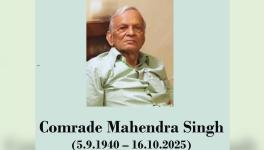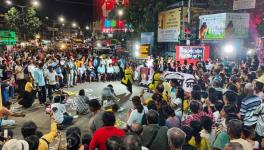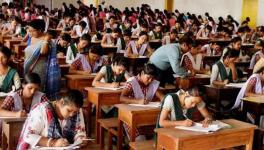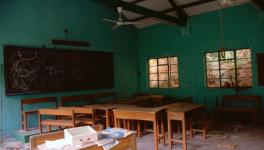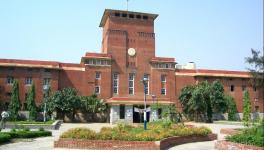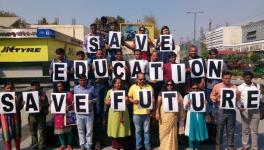Students', Teachers' Unions Slam UGC Note on 40% Online Learning
Students and teachers' unions have slammed a University Grants Commission (UGC) concept note which may soon result in Higher Education Institutions teaching up to 40% of any course through online mode.
The concept note, titled 'Blended Mode of Teaching and Learning', has invited feedback from stakeholders by June 6. It was proposed in a UGC meeting on May 20.
In a statement issued on Tuesday, the Students' Federation of India's Delhi chapter said that the move was in "alignment with NEP 2020" which had been "actively resisted" by the student fraternity from across the country with students saying it would lead to a further commercialisation and centralisation of education in the country.
The SFI said that the issue of exclusion stemming from the digital divide in the country weighs heavier than the move's intended benefits. " As far as the material conditions in the country, equitability in access to digital resources and internet are concerned the UGC's decision will exclude students from marginalized communities from getting higher education. However well planned and ambitious the project maybe, it leaves a very major aspect of the socio-economic condition of the students, particularly students from working class backgrounds unaddressed," the statement mentioned.
It added that there had not been any efficacy studies regarding the effectiveness of online education and that the "unscientific approach" would not only hamper "academic quality" but also teachers' jobs and lielihoods. "It needs to be emphasized that lack of formality plagues online education and it cannot replace real-time learning in classrooms," the SFI said.
The students' body added that such systems needed the requisite infrastructure in place for its functioning and that the budgetary allocations would not suffice. It said that such a measure should only be resorted to during extreme situations like the COVID-19 pandemic.
"SFI Delhi therefore strongly objects to the UGC panel's proposal and observe this as an attempt to make higher education exclusive for the socio-economically advantaged as well as to deteriorate the education sector in its entirety by corroding the quality of education," it said.
The Delhi University Teachers’ Association also objected strongly to the intended move, also saying that it would lead to underprivileged and marginalised sections of society not having access to a proper education.
"It is extremely shocking that UGC has brought out a notification allowing higher education institutions (HIEs) ) to teach up to 40% of syllabus of each course (other than SWAYAM course) through the online mode and the remaining 60% in the offline mode. This un-academic and ill-timed recommendation will erode the autonomy of HIEs and teachers further," DUTA said.
The UGC's concept note, prepared in accordance with the new National Education Policy (NEP), which, its expert panel believes, gives the acceptability of many modes of learning including that of face to face learning, online learning and distance or virtual mode.
According to the draft, "the advantages of blended learning for students include increased learning skills, greater access to information, improved satisfaction and learning outcomes and opportunities both to learn with others and to teach others".
“Blended learning is not a mere mix of online and face-to-face mode, but it refers to a well-planned combination of meaningful activities in both the modes. The blend demands consideration of several factors, mainly focussing on learning outcomes and the learner centred instructional environment," the draft note said.
Defining the role of teachers in blended learning, the draft note said, "blended learning shifts the teacher’s role from knowledge provider to coach and mentor. This shift does not mean that teachers play a passive or less important role in students’ education. Quite the contrary -- with blended learning, teachers can have an even more profound influence and effect on students’ learning".
The draft note also recognised that proper infrastructure needs to be in place for such a plan to be successful, saying: "It must be ensured that required infrastructure for online systems such as accessibility of internet, bandwidth, hardware, space and other related resources be made easily available for the smooth execution of blended teaching-learning process. The financial aid required to develop the infrastructure and resources must also be taken care of."
However, the COVID-19 pandemic has shown that the country is still a fair distance away from ensuring access to education for all students. In its feedback to the UGC last year, DUTA had mentioned that "it is important to recognise that a large section of students come from outside Delhi and that an equally significant number comes from underprivileged backgrounds, and the environment at their homes is unlikely to be conducive for learning."
A Newsclick report had pointed out that 55% of students pursuing higher education live in rural areas, where uninterrupted power supply is an additional problem. About 70% of rural households did not possess a device and 42% had no access to internet, the corresponding figures for urban areas was 40% and 15% respectively.
With PTI Inputs
Get the latest reports & analysis with people's perspective on Protests, movements & deep analytical videos, discussions of the current affairs in your Telegram app. Subscribe to NewsClick's Telegram channel & get Real-Time updates on stories, as they get published on our website.









